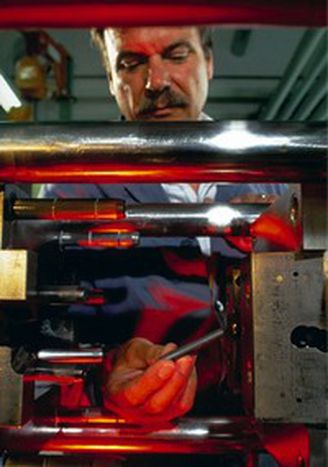
Free movement in Europe?
Published on
Translation by:
Francesca ReinhardtNew EU members are keen on free movement but are afraid of the brain drain; old EU members are blocking migration but their job markets need more young workers. Welcome to the paradoxical world of immigration policy.
In Central and Eastern Europe, fears of losing highly qualified workers, such as doctors and computer scientists, are widespread. Meanwhile, Western Europe dreads a flood of immigration. Following EU enlargement in May 2004, most of the old EU member states put in place transitional regulations concerning the free circulation of workers. Although the three other basic freedoms of the 1957 Treaty of Rome (free circulation of services, goods and capital) still apply, the right to freely choose where to work is not quite forthcoming to workers from the new member states (with the exception of Malta and Cyprus.) Instead, it is the “2+3+2 Model” which is implemented for the most part: For the duration of two years, the national governments’ transitional regulations will apply. In 2006, the EU Commission will review the situation and the member states must explain and justify any further use of these restrictions. Another review will take place after three years and the restrictions can be extended for the last time for another two years.
Without a work visa, nothing works
In practice, this means that a Polish, Latvian, or Czech EU citizen has to get a work visa in order to work in say Germany, Belgium, or Austria. The criteria in order to obtain such authorisation vary from country to country and mostly depend on the situation in the domestic job market. However, regulations do not apply to self-employed workers, leading to huge problems in Germany where there has been an influx of construction workers from abroad.
Only Ireland, Sweden and the United Kingdom (with some restrictions) allow citizens from the new countries to work without special authorisation.
But people in the new members states are by no means second class citizens, as EU Commissioner for Foreign Affairs Benita Ferrero-Waldner explained in 2001 in an interview with the German newspaper, Die Zeit. Indeed, the regulations concerning economic migration in the new member states are more or less the mirror image of those in the old member states. A German worker, for example, cannot take a job in Poland without a work visa and new member states have themselves proposed and implemented a great many transitional regulations, such as the 18 year period during which the acquisition of land by western Europeans in Poland is regulated.
Is migration a threat?
In the run up to the EU’s eastwards expansion, estimates of the number of economic migrants coming from the new member states were sky high. In 2001, the Ifo Institute for Economic Research claimed that up to 15 million people would migrate in 15 years. Today it is clear that no such migration exists. “By 2030, no more than 3.7 million people from the new EU states will have resettled in the old EU states…, of which 2.3 million will settle in Germany,” stresses Herbert Bruecker from the German Institute for Economic Research. In the event that total labour mobility is granted, at most only 1% of the working population from Central and Eastern Europe will opt for a new start in the West. Because in order for a worker to leave home, it takes more than fulfilment of the legal prerequisites. Cultural differences, as well as language and professional qualifications, play a big role and discourage many from taking the risk of stepping into the unknown.
Parallels with the southern expansion
The prevailing fears within the population and the overestimates of the figures are comparable to the expansion of the European Union to Greece (1981), and then Portugal and Spain (1986.) These countries were similarly behind in terms of economic development, as Central and Eastern European countries are today. According to a study by the Hamburg Institute of International Economics (HWWA), the purchasing power of the Spanish and Portuguese was at only 60-70% of German levels in the years immediately before and after membership. Here too, there were transitional regulations in connection to free circulation. Major migration movements never took place.
In the long term, the ageing population of EU states like Germany will force a reconsideration of the immigration system, since qualified labour is already a limited commodity in areas like IT or the health sector. Targeted immigration could indeed help dissipate the economic consequences of the ageing population. In the process, however, we should not lose sight of the effects of the departure of young and qualified workers on the fledgling market economies of Central and Eastern Europe.
Translated from Freizügiges Europa?



